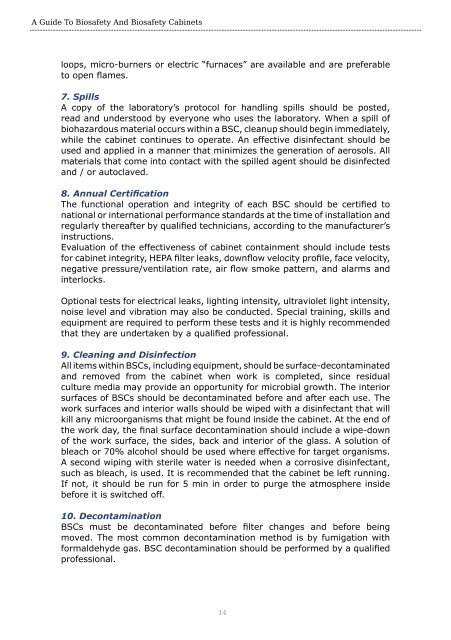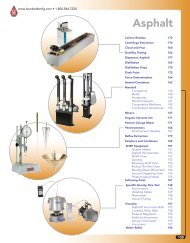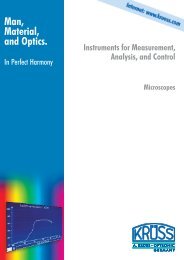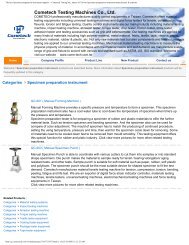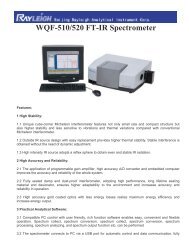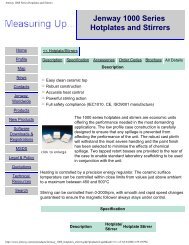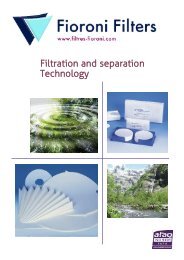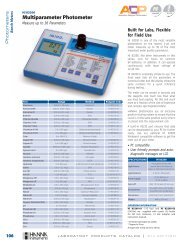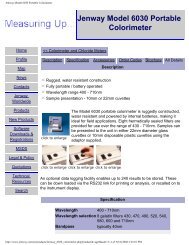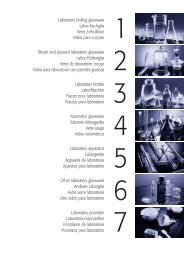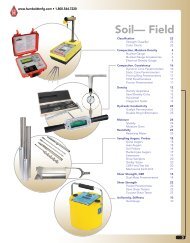Esco Labculture® Plus Class II Type A2 Biosafety Cabinet - Comlibris
Esco Labculture® Plus Class II Type A2 Biosafety Cabinet - Comlibris
Esco Labculture® Plus Class II Type A2 Biosafety Cabinet - Comlibris
Create successful ePaper yourself
Turn your PDF publications into a flip-book with our unique Google optimized e-Paper software.
A Guide To <strong>Biosafety</strong> And <strong>Biosafety</strong> <strong>Cabinet</strong>s<br />
loops, micro-burners or electric “furnaces” are available and are preferable<br />
to open flames.<br />
7. Spills<br />
A copy of the laboratory’s protocol for handling spills should be posted,<br />
read and understood by everyone who uses the laboratory. When a spill of<br />
biohazardous material occurs within a BSC, cleanup should begin immediately,<br />
while the cabinet continues to operate. An effective disinfectant should be<br />
used and applied in a manner that minimizes the generation of aerosols. All<br />
materials that come into contact with the spilled agent should be disinfected<br />
and / or autoclaved.<br />
8. Annual Certification<br />
The functional operation and integrity of each BSC should be certified to<br />
national or international performance standards at the time of installation and<br />
regularly thereafter by qualified technicians, according to the manufacturer’s<br />
instructions.<br />
Evaluation of the effectiveness of cabinet containment should include tests<br />
for cabinet integrity, HEPA filter leaks, downflow velocity profile, face velocity,<br />
negative pressure/ventilation rate, air flow smoke pattern, and alarms and<br />
interlocks.<br />
Optional tests for electrical leaks, lighting intensity, ultraviolet light intensity,<br />
noise level and vibration may also be conducted. Special training, skills and<br />
equipment are required to perform these tests and it is highly recommended<br />
that they are undertaken by a qualified professional.<br />
9. Cleaning and Disinfection<br />
All items within BSCs, including equipment, should be surface-decontaminated<br />
and removed from the cabinet when work is completed, since residual<br />
culture media may provide an opportunity for microbial growth. The interior<br />
surfaces of BSCs should be decontaminated before and after each use. The<br />
work surfaces and interior walls should be wiped with a disinfectant that will<br />
kill any microorganisms that might be found inside the cabinet. At the end of<br />
the work day, the final surface decontamination should include a wipe-down<br />
of the work surface, the sides, back and interior of the glass. A solution of<br />
bleach or 70% alcohol should be used where effective for target organisms.<br />
A second wiping with sterile water is needed when a corrosive disinfectant,<br />
such as bleach, is used. It is recommended that the cabinet be left running.<br />
If not, it should be run for 5 min in order to purge the atmosphere inside<br />
before it is switched off.<br />
10. Decontamination<br />
BSCs must be decontaminated before filter changes and before being<br />
moved. The most common decontamination method is by fumigation with<br />
formaldehyde gas. BSC decontamination should be performed by a qualified<br />
professional.<br />
14


